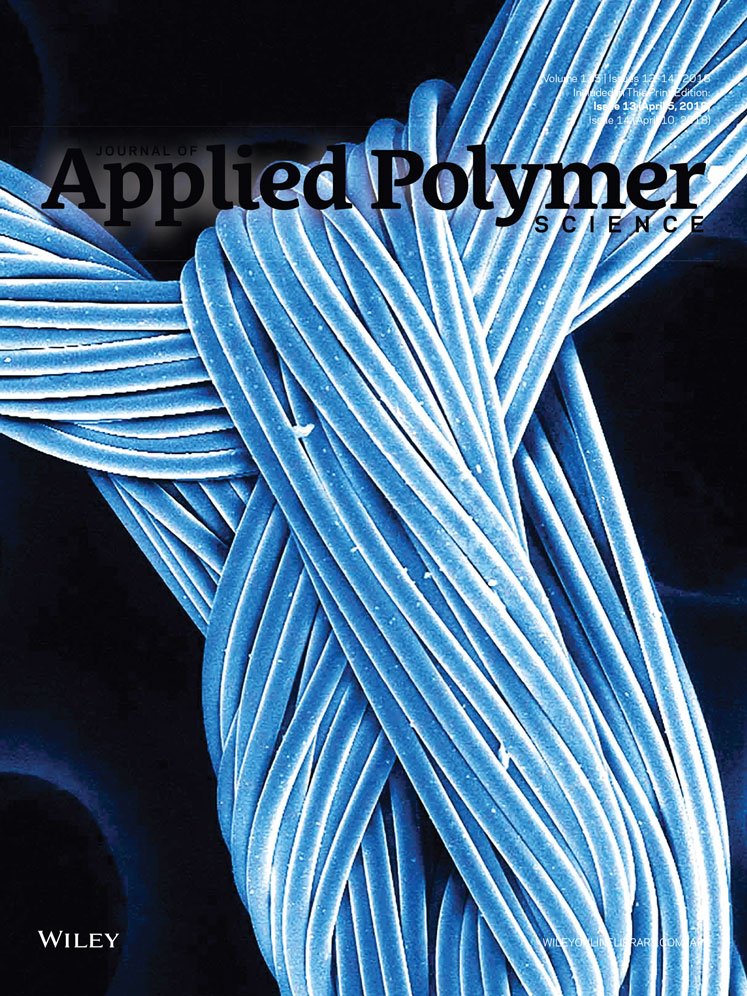Formation of co-continuous PLLA/PC blends with significantly improved physical properties by reactive comb polymers
ABSTRACT
A kind of reactive comb (RC) polymer, which is constituted by poly(methyl methacrylate) backbone and side chains and a few epoxide groups that distribute randomly along the backbone, has been applied as compatibilizers for the thermodynamically immiscible poly(l-lactide) (PLLA)/polycarbonate (PC) blend (50/50, wt/wt). Phase morphology and physical properties of the compatibilized PLLA/PC blends are characterized by scanning electron microscopy, transmission electron microscopy, and tensile tests. It has been found that the morphologies of the PLLA/PC blends are significantly ameliorated with the addition of RC polymers. A type of PLLA/PC blend with stable co-continuous morphology has been achieved by the incorporation of more than 3 wt % of RC polymers. The mechanical tests showed that the co-continuous PLLA/PC blends have an excellent stiffness-toughness balance with high modulus and significantly improved ductility. Especially, the elongation at break of the PLLA/PC blend compatibilized by 10 wt % of RC polymers is 10 times higher than that of neat PLLA, in which the blend exhibits a cocontinuous lamellar microstructure. Furthermore, the PLLA/PC blends with cocontinuous morphology exhibit dramatically improved thermal stability as compared to neat PLLA when the temperature is over the Tg of the PLLA phase. © 2017 Wiley Periodicals, Inc. J. Appl. Polym. Sci. 2018, 135, 46047.




